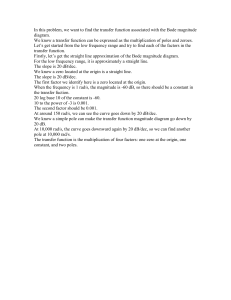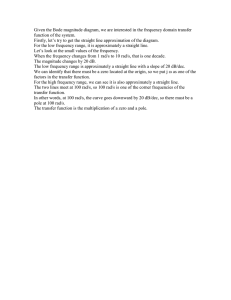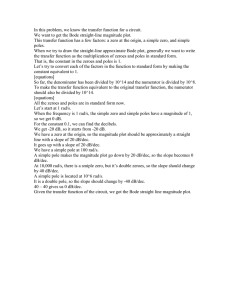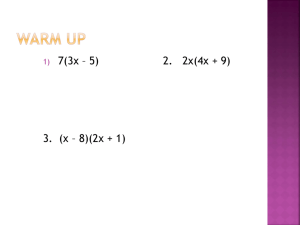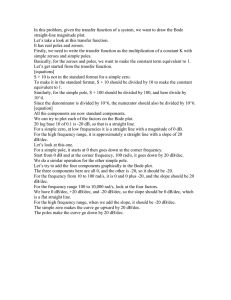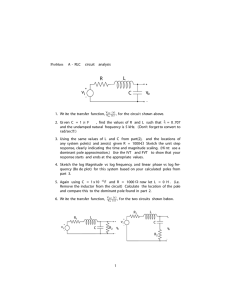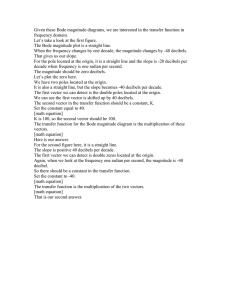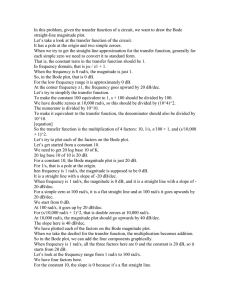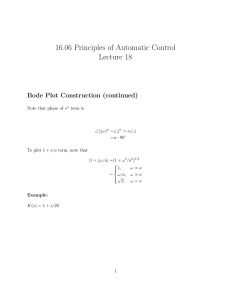In this problem, we are interested in the transfer function... magnitude diagram.
advertisement
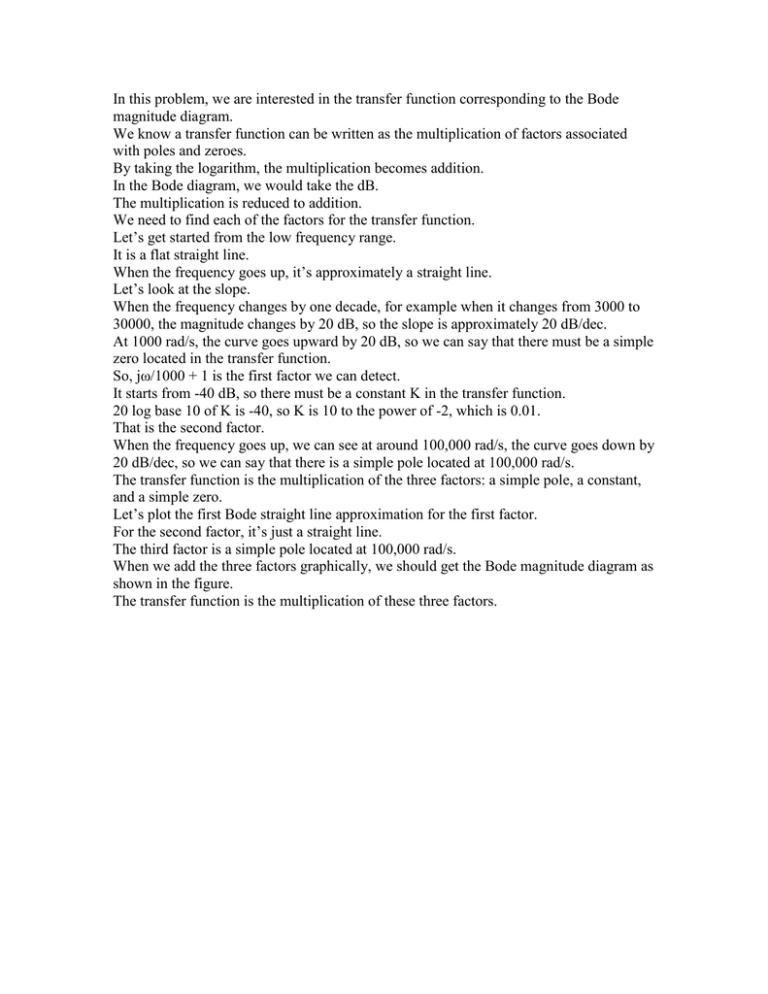
In this problem, we are interested in the transfer function corresponding to the Bode magnitude diagram. We know a transfer function can be written as the multiplication of factors associated with poles and zeroes. By taking the logarithm, the multiplication becomes addition. In the Bode diagram, we would take the dB. The multiplication is reduced to addition. We need to find each of the factors for the transfer function. Let’s get started from the low frequency range. It is a flat straight line. When the frequency goes up, it’s approximately a straight line. Let’s look at the slope. When the frequency changes by one decade, for example when it changes from 3000 to 30000, the magnitude changes by 20 dB, so the slope is approximately 20 dB/dec. At 1000 rad/s, the curve goes upward by 20 dB, so we can say that there must be a simple zero located in the transfer function. So, jω/1000 + 1 is the first factor we can detect. It starts from -40 dB, so there must be a constant K in the transfer function. 20 log base 10 of K is -40, so K is 10 to the power of -2, which is 0.01. That is the second factor. When the frequency goes up, we can see at around 100,000 rad/s, the curve goes down by 20 dB/dec, so we can say that there is a simple pole located at 100,000 rad/s. The transfer function is the multiplication of the three factors: a simple pole, a constant, and a simple zero. Let’s plot the first Bode straight line approximation for the first factor. For the second factor, it’s just a straight line. The third factor is a simple pole located at 100,000 rad/s. When we add the three factors graphically, we should get the Bode magnitude diagram as shown in the figure. The transfer function is the multiplication of these three factors.
